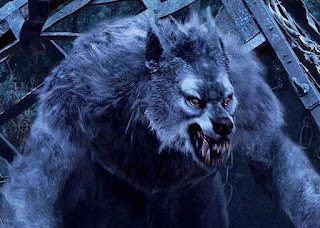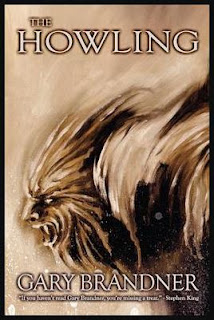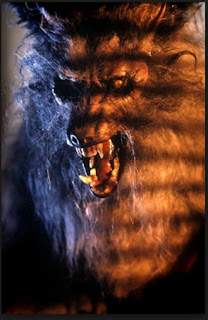Louis Creed: Portrait of an Unprepared Man
I was speaking with a co-worker today about one Louis Creed, pictured above played by Dale Midkiff, from the hit novel, and now TWO films, all entitled "Pet Semetary"-purposefully misspelled by Stephen King. I have to say that I have had a serious issue with Louis here since I revisited the material for the recently released remake of "Pet Semetary" (where he will be played by Jason Clarke) because I wanted to be fair to the new film by seeing if there were any lingering issues I had with it's predecessor. Going back I became awestruck with just how checked-out Louis was from his own family. His wife, played in the 1989 film by Denise Crosby gives a compelling and emotionally charged retelling of the most horrific moment in her young life, one that dramatically scarred her into adulthood and Louis...gives her Valium and tells her not to worry about it. He is a doctor after all.
Initially I chalked this behavior up to being a 1980's era doctor living in a Stephen King story. People aren't always their best selves in his books after all. But in talking to my co-worker, I was going over just how far Louis missed the boat in being a father and a husband.
For the record, he acquires his new home in Maine without viewing the property. The house has no fence and is next to a well known road frequented by high speed trucks. He's got a toddler folks. Even in the 1980's this was a bad idea. But again, when he and his family enter the house its like they've never seen the property before because they immediately notice the eerie path behind the house leading up to...wait for it...the Pet Semetary.
Well alright so he makes bad financial decisions and can't handle emotional situations, lets see how he handles the life and death topics of...life and death.
While visiting his in-laws, a trip he recuses himself from because he doesn't get a long with them, he discovers his daughter's cat, Church, dead on the road. The girl, Ellie, is right around eight or nine years old. My own kids dealt with the death of their cat at four and five. Louis reasons that rather than have his little girl learn about death the hard way, he'd rather bury the cat in the cursed burial ground and let it come back to life. Despite being warned not to. By a ghost that apparently transported him out of his bed to said burial ground.
Now, armed with the information that when you bury something there it comes back darker and more violent, because he sees this in the cat, when his young son Gage is killed by a truck he...does the same thing. When Gage goes on his pint sized killing spree, Louis has to put the little nightmare down, but not until after Gage kills Rachel. So Louis does the only natural thing...he puts her in the burial ground and is promptly shocked when she comes back and kills him. Maybe. Its not made clear but as everything else spat out of that ground was homicidal, its a safe leap.
Now, going backward we can evaluate every decision he makes during the film and see where he went very wrong. 1) Don't bury Rachel in the evil ground. 2) Don't bury Gage in the evil ground. 3) Don't bury Church in the evil ground a ghost warned you about. 4) Tell your daughter the cat died. 5) Do some scouting BEFORE you move your family to another state.
I went backwards because I wanted to illustrate just how everything bad that happens in the story is a direct result of Louis Creed shirking the responsibility of being a father and husband. There are people living in Ludlow (the name of the town the story takes place in) that have nothing to do with the Pet Semetary and are apparently just fine...well as fine as anyone in a Stephen King story is. But here is where my revelation happened, where the cloak of nostalgia was lifted from my eyes and I saw Louis Creed for what he was...he was unprepared.
Louis is a man who is unprepared for his role as a husband and father. He may be a bang-up doctor, but head of a household he is not, and Rachel's father knew it. There is a throw-away line in the film where he says that Rachel's father tried to pay to not have them marry. This is a huge clue because her father...really any father...just wants their daughter to marry someone who will make their girl happy and keep them safe. There was something in Louis that Rachel's father saw and didn't like. He knew that Louis wasn't prepared.
Louis lets someone else set up housing arrangements for his family. Again, its evident because both act like they've never seen it before at the start of the film. Louis, if he was prepared for this, would have gone out there and procured a house in person rather than just listing off specifications and letting a realtor take it from there.
But the most telling part of how unprepared Louis is gets showcased in his dealing with Rachel, and his refusal to deal with Ellie. He can't handle big emotions, because he won't comfort Rachel. He drugs her and lets her sleep it off so he doesn't have to deal with it. He can't deal with Ellie being "devastated" even though as a doctor he understands that death is a thing that is unavoidable and that Ellie should be old enough to understand. His excuse is "She'll be devastated". Let her be devastated. That's part of the grieving process, that initial shock and devastation.
Almost every new father and husband is unprepared, if we're being 100% honest. I personally haven't met one that said "Oh I am totally crushing this dad thing." and actually was getting it 100% right. No, there is a learning curve, and there is a build up to being the man you need to be. Louis, unfortunately, never got there and everyone in his family suffered, but most of all, probably Ellie. If you think about it, the story takes off because Louis doesn't want Ellie to be devastated, and yet, how much more devastated do you think she'll be, Louis, now that her entire family is gone?
This is what happens when you don't face responsibility.
Thanks for reading























